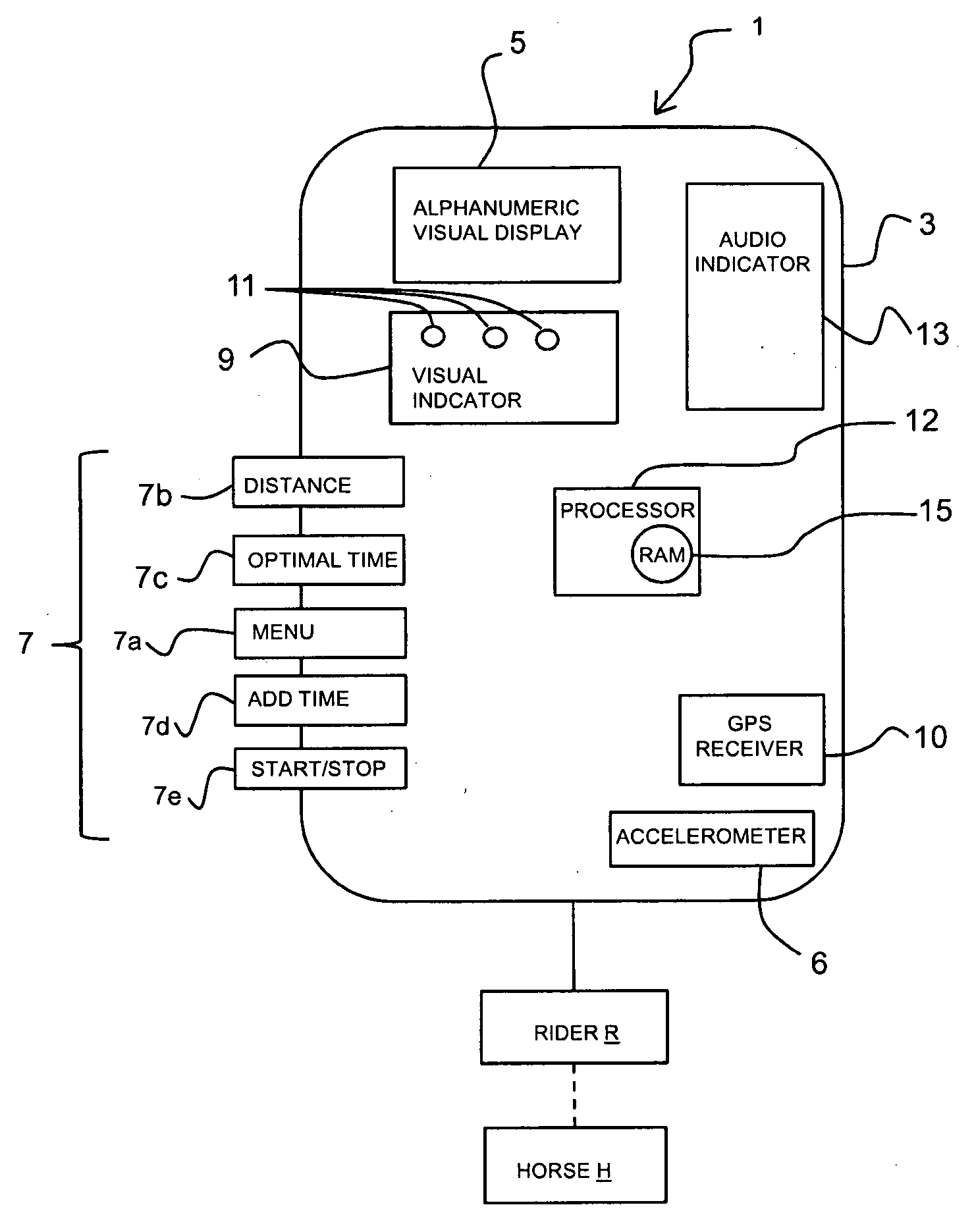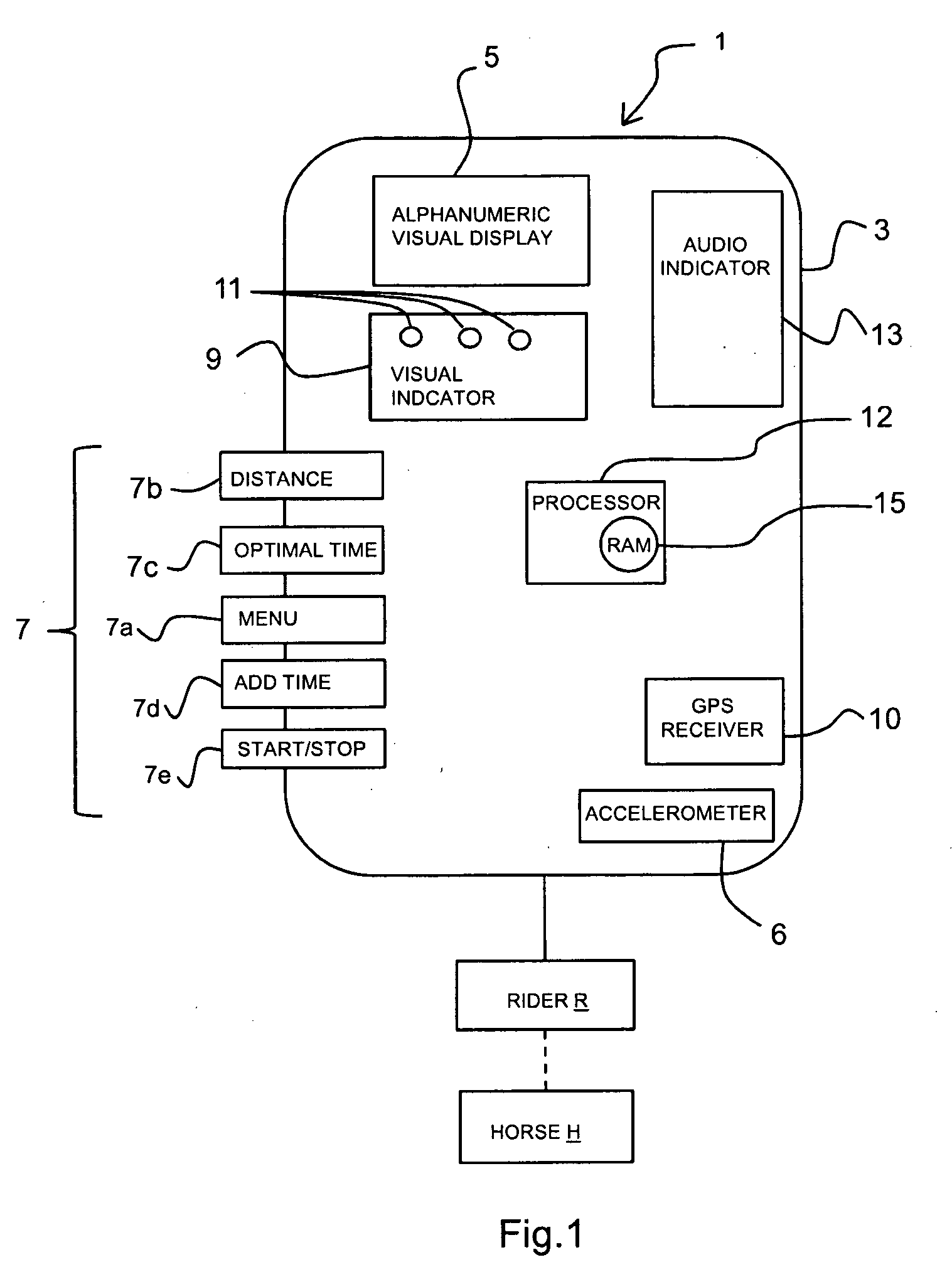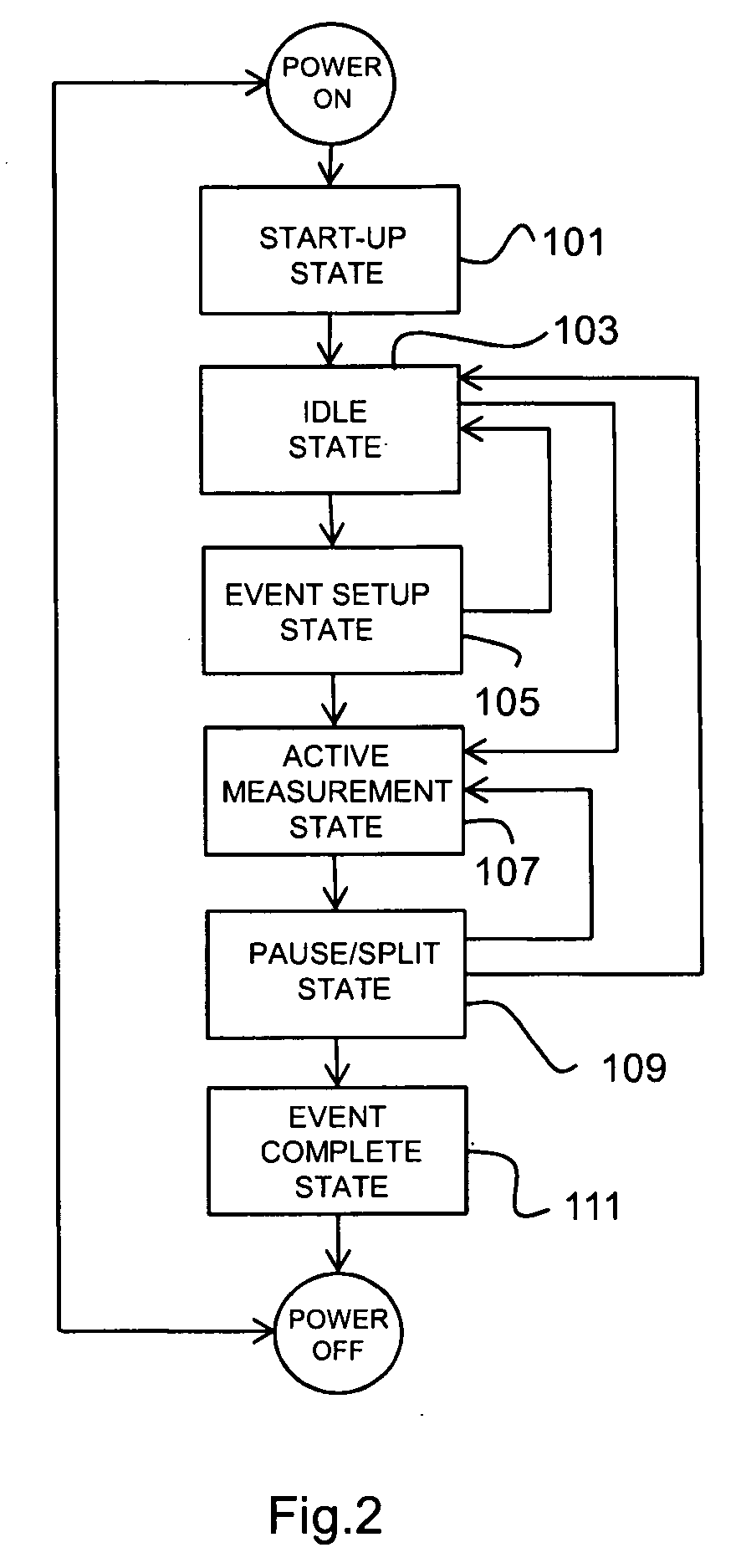Method and apparatus for measuring and estimating subject motion in variable signal reception environments
a variable signal reception and subject motion technology, applied in distance measurement, navigation instruments, instruments, etc., can solve the problems of inability to maintain consistent stride, inability to accurately estimate the speed and distance covered, and failure to gain widespread acceptance of portable pedometers, etc., to achieve easy viewability of speed and distance measurement and light weight
- Summary
- Abstract
- Description
- Claims
- Application Information
AI Technical Summary
Benefits of technology
Problems solved by technology
Method used
Image
Examples
Embodiment Construction
[0033]Before explaining the present embodiments in detail, it is to be understood that the embodiments are not limited to the particular descriptions and that it can be practiced or carried out in various ways. In the following description, at least one embodiment of the present invention will be described as a software program. Those skilled in the art will readily recognize that the equivalent of such software may also be constructed in hardware. Because data manipulation algorithms and systems are well known, the present description will be directed in particular to algorithms and systems forming part of, or cooperating more directly with, the method in accordance with the present invention. Other aspects of such algorithms and systems, and hardware and / or software for producing and otherwise processing the data signals involved therewith, not specifically shown or described herein may be selected from such systems, algorithms, components, and elements known in the art.
[0034]The ...
PUM
 Login to View More
Login to View More Abstract
Description
Claims
Application Information
 Login to View More
Login to View More - R&D
- Intellectual Property
- Life Sciences
- Materials
- Tech Scout
- Unparalleled Data Quality
- Higher Quality Content
- 60% Fewer Hallucinations
Browse by: Latest US Patents, China's latest patents, Technical Efficacy Thesaurus, Application Domain, Technology Topic, Popular Technical Reports.
© 2025 PatSnap. All rights reserved.Legal|Privacy policy|Modern Slavery Act Transparency Statement|Sitemap|About US| Contact US: help@patsnap.com



